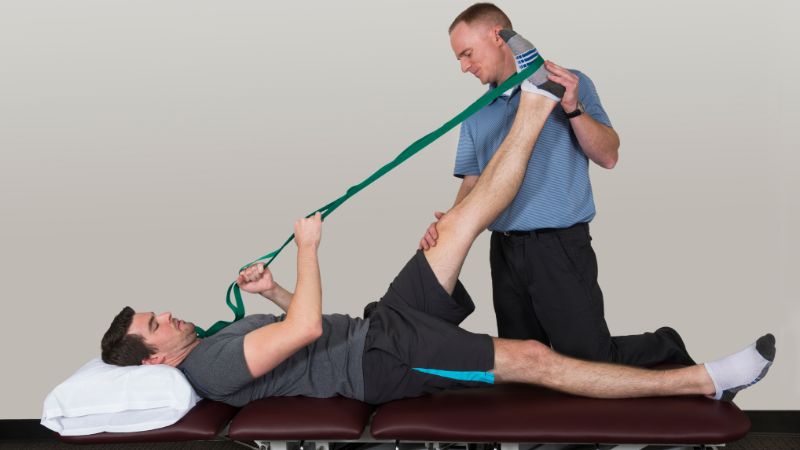Neck and shoulder pain are prevalent issues that affect people of all ages and lifestyles. These discomforts can arise from various causes such as poor posture, muscle strain, injury, or underlying medical conditions like arthritis or herniated discs. Whether due to long hours at a desk, heavy lifting, or sports activities, these pains can significantly hinder daily activities and overall quality of life. Fortunately, physical therapy offers numerous effective solutions. Physical Therapy Treatment For Neck And Shoulder Pain encompasses a variety of techniques designed to alleviate pain, restore function, and prevent recurrence. Here, we explore the top 11 physical therapy treatments that can help you regain comfort and mobility in your neck and shoulders.
Physical Therapy Treatment For Neck And Shoulder Pain
Manual Therapy
Manual therapy involves hands-on techniques performed by a physical therapist to manipulate muscles, joints, and soft tissues. These techniques are designed to alleviate pain, increase range of motion, and improve overall function. Massage is a common method used to relieve muscle tension, improve blood flow, and reduce pain. Joint mobilization involves gently moving the joints to increase their range of motion and decrease stiffness. Myofascial release targets the fascia, the connective tissue surrounding muscles, to reduce tightness and pain. By using these techniques, therapists can address both acute and chronic conditions, promoting healing and restoring movement in the neck and shoulders.
Therapeutic Exercise
The foundation of physical therapy for shoulder and neck discomfort is physical activity. These exercises are tailored to each individual’s specific needs and focus on strengthening, stretching, and improving posture. Strengthening exercises target the muscles supporting the neck and shoulders to enhance stability and prevent future injuries. Stretching exercises aim to improve flexibility and reduce muscle tightness, which can alleviate pain. Postural exercises are designed to correct poor posture habits that contribute to discomfort. A personalized exercise program, guided by a physical therapist, can significantly reduce pain and improve the function and mobility of the neck and shoulders over time.
Postural Training
Postural training is essential for addressing neck and shoulder pain, especially when poor posture is a contributing factor. This approach involves several strategies to promote better alignment and reduce strain on the neck and shoulders. Ergonomic assessments help in adjusting workspaces and daily habits to encourage proper posture. Postural awareness techniques teach patients to recognize and correct poor posture throughout the day, whether sitting, standing, or moving. Strengthening exercises focus on muscles that support good posture, such as the back and core muscles. By incorporating these strategies, individuals can develop healthier posture habits, reducing the likelihood of experiencing pain and improving overall musculoskeletal health.
Heat and Cold Therapy
Heat and cold therapy are simple yet effective methods for managing neck and shoulder pain. Heat therapy involves applying warm packs or heating pads to the affected area. The heat increases blood flow, relaxes muscles, and alleviates stiffness, making it particularly beneficial for chronic pain conditions. Cold therapy, on the other hand, involves applying ice packs or cold compresses to reduce inflammation and numb sore tissues. This method is especially useful for acute injuries or flare-ups. A physical therapist can provide guidance on when and how to use these therapies to maximize their benefits and ensure they are applied safely and effectively.
Electrical Stimulation
Electrical stimulation is a versatile treatment used in physical therapy to manage pain and improve muscle function. There are two common forms: Transcutaneous Electrical Nerve Stimulation (TENS) and Neuromuscular Electrical Stimulation (NMES). TENS works by sending electrical impulses through the skin to block pain signals to the brain and promote the release of endorphins, the body’s natural painkillers. NMES stimulates muscle contractions to strengthen weakened muscles and enhance their function. Electrical stimulation can be particularly effective for acute pain management and rehabilitation following injury, helping patients regain strength and reduce discomfort in their neck and shoulders.
Ultrasound Therapy
Ultrasound therapy uses high-frequency sound waves to penetrate deep into tissues, providing several therapeutic benefits. Deep heating is one of the primary effects, which improves blood circulation and aids in the healing process of soft tissues. Tissue relaxation is another benefit, as the heat from the ultrasound can reduce muscle spasms and stiffness, making it easier for patients to move and exercise. Additionally, ultrasound therapy helps in reducing inflammation, which is crucial for managing chronic conditions like tendinitis or bursitis. This non-invasive treatment can be particularly beneficial for those experiencing persistent neck and shoulder pain, offering relief and promoting recovery without the need for medication.
Also Read: 10 Best Physical therapy techniques for carpal tunnel syndrome
Dry Needling
Dry needling is a technique used by physical therapists to alleviate muscle pain and improve function. This involves inserting thin, sterile needles into trigger points or tight muscles. The primary goal is to release muscle knots and reduce tension. By targeting these specific points, dry needling can significantly decrease muscle spasms and improve flexibility. Additionally, the technique promotes healing by increasing blood flow to the affected area, which aids in the repair of damaged tissues. Dry needling can also alter pain perception, making the area less sensitive to pain stimuli. This treatment can be effective for both acute and chronic neck and shoulder pain, helping patients achieve better mobility and reduced discomfort.
Kinesiology Taping
Kinesiology taping involves applying a special elastic tape to the skin to support muscles and joints without restricting movement. The tape provides several benefits, including pain relief by reducing pressure on pain receptors. It also helps in swelling reduction by improving lymphatic drainage, which is particularly useful after an injury or surgery. Moreover, kinesiology taping offers support and stability to injured muscles and joints, helping to prevent further injury while allowing for continued movement. This method is often used in conjunction with other physical therapy treatments to enhance recovery and improve overall function. Its versatility and effectiveness make it a valuable tool in managing neck and shoulder pain.
Traction Therapy
Traction therapy, particularly cervical traction, is a treatment that involves gently pulling on the head to stretch the neck and reduce pressure on the spine. This therapy can be performed manually by a physical therapist or using mechanical devices. Traction therapy helps in reducing pain by alleviating pressure on nerves and intervertebral discs, which can be particularly beneficial for conditions like herniated discs or pinched nerves. Additionally, it can improve mobility by increasing the range of motion in the neck and promoting better alignment. This treatment is often used for chronic neck pain and conditions that involve nerve compression, providing significant relief and enhancing overall neck function.
Ergonomic Advice
Ergonomic advice focuses on modifying the work environment and daily activities to prevent strain and injury, which is crucial for individuals experiencing neck and shoulder pain. This includes workspace adjustments, such as ensuring proper desk and chair setup to support good posture and reduce strain on the neck and shoulders. Activity modifications involve learning techniques to perform daily tasks, such as lifting or driving, in a way that minimizes stress on these areas. Equipment recommendations, like ergonomic chairs or keyboards, can further support proper posture and reduce discomfort. Implementing ergonomic principles can significantly prevent the recurrence of neck and shoulder pain, promoting a healthier and more comfortable work and living environment.
Patient Education
Patient education is a crucial component of physical therapy, empowering individuals to take an active role in their recovery and long-term health. Through education, patients learn various pain management techniques, such as using heat or cold therapy, to manage symptoms at home. They are also taught injury prevention strategies, including proper body mechanics and exercises, to avoid future injuries. Additionally, patients learn self-care practices, such as regular stretching and relaxation techniques, to maintain progress and prevent setbacks. By understanding their condition and how to manage it, patients can make informed decisions about their health, leading to better outcomes and sustained improvement in their neck and shoulder function.
Conclusion
Neck and shoulder pain can significantly impact daily life, but physical therapy offers a range of effective treatments to alleviate pain and improve function. Combining manual therapy, therapeutic exercises, postural training, and other modalities provides comprehensive care tailored to individual needs. These treatments not only address the symptoms but also the underlying causes of pain, promoting long-term relief and preventing recurrence. By improving strength, flexibility, posture, and overall body mechanics, physical therapy helps patients regain their comfort and mobility. Additionally, patient education empowers individuals to manage their condition and maintain progress at home. With a personalized approach and professional guidance, physical therapy can help individuals achieve lasting relief and a better quality of life. Consulting with a healthcare professional ensures that you receive the most appropriate and effective treatment plan for your specific condition.
FAQs
How long does it take to see results from physical therapy for neck and shoulder pain?
Results can vary, but many patients begin to see improvement within a few weeks of consistent therapy.
Can physical therapy completely cure neck and shoulder pain?
While physical therapy can significantly reduce pain and improve function, ongoing exercises and lifestyle changes may be necessary to maintain results.
Is physical therapy painful?
Physical therapy should not be painful. Some discomfort may occur during exercises or treatments, but it should be manageable and is part of the healing process.





